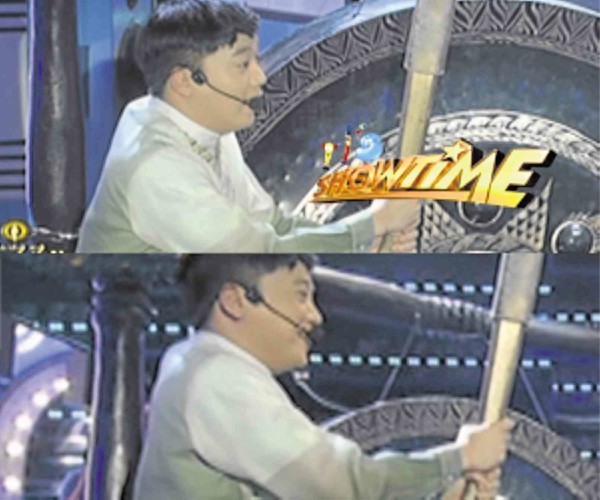ONE OF the “tradition-honoring” hallmarks of the revived “Tawag ng Tanghalan” singing tilt on “It’s Showtime” is its use of a giant gong as its official way of abruptly putting a stop to an off-tune or otherwise unacceptable performance.
It harks back to the old “Tawag” and continues to be employed locally despite its having fallen out of fashion and “political correctness” elsewhere.
We’ve gone on record wishing that it be similarly passé, defunct and extinct locally, but it persists because some jurors obviously find it a good vetting and teaching tool, and some viewers think it’s funny (even if the “gonged” contestants certainly don’t).
These thoughts come to mind, because we recently caught a “Tawag” telecast in which a singer was gonged—and she looked really miserable due to the official “failing mark” that she had just received.
It made us realize why the practice has lost favor elsewhere: In these more enlightened and sensitive times, embarrassing somebody in public, for whatever reason, is no longer acceptable.
In our considered view, the tilt can very well dispense with its giant gong—if its audition process is made more stringent, as it should be.
In other words, it should be the responsibility of the show’s audition masters to turn down off-tune and otherwise insufficient performers out of the camera range, not the obligation of the on-cam judges.
Why, indeed, would a less than competent singer be allowed to compete on the popular tilt at all?
If a contestant turns out to “deserve” getting gonged, the show’s audition masters should similarly be penalized, because they’re supposed to be in charge of “quality control.”
That way, public embarrassment will be avoided even if it’s done with the best motive in the world, for “teaching” purposes for the benefit of the contestants and the viewing public.
To give the discussion a historical context, we’ve learned that the “gonging” practice began in old vaudeville theaters’ “amateur” talent competitions.
Actually, its first manifestation wasn’t a gong but a shepherd’s hook, which was used to literally pull lousy contestants in the middle of awful or excessively extended acts—most unceremoniously!
The gong came later and had a similarly abrupt, comedic effect. But that was many, many years ago, when the viewing masses were less considerate, educated and enlightened than we’re supposed to be now.
The gong should be—going, going, gong!
